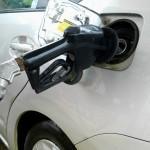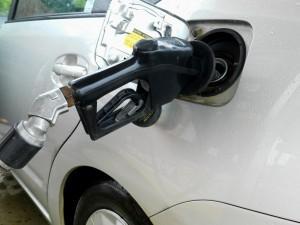

While gasoline is commonplace in our car and other machinery, we often taken for granted how dangerous the flammable liquid can be. The quality of explosive ignition that makes gasoline so valuable as a fuel can also cause serious injuries if handled or used for a purpose for which it is not intended. These burn accidents are often associated with careless or misuse of gasoline. Most accident occur in the summer months due to increased use of gasoline for farming and recreational purposes such as bonfires, burning leaves, boating and yard work. A basic lack of understanding of the explosive nature of gasoline by the general public seems to contribute to the improper storage and misuse as a solvent, engine primer or fire starter. Gasoline burn seems to decrease a great deal in the winter months.
Those Generally Injured by Gasoline Burns
While just about anyone can be injured in a gasoline or flammable liquid related accident, the highest rate of gasoline-related injuries occur among those who use gasoline in their work such as mechanics, yard maintenance, heavy duty and light power equipment operators. Gasoline associated with recreational activities such as boating, camping and barbeque grilling can cause burn injuries as well.
Statistics on Gasoline-related Injuries:
Accidents involving gasoline are a major cause of thermal burns in the United State. Gasoline burns account for about 13,000-15,000 visits per year. In 1998, there were an estimated 463 burn injuries caused by the misuse of gasoline. However, since those statistics are based on reports of incidents in which the fire department responded, they do not include injuries sustained and transported to the hospital in another means beside an ambulance. There are 125 severe burn hospitals in the US and frequently if someone is severely burned, they are transferred to one of those 125 centers due to their severity. Around 80% of those victims are males and the primary age range is birth to 45 with a spike around age 30.
In a 2000 report done by the National Fire Protection Association, based on data from 1993-1998, the following annual statistics were estimated:
- Over 140,000 fires, including 120,000 in vehicles (most of them occupied(
- Over 6,000 residential fires
- About 500 deaths
- Thousands of hospital emergency room visits
- Nearly $500 million in direct property damage costs from gasoline related fires
Some common scenarios where gasoline-related injuries occur include the use of portable gasoline containers, filling portable gas containers, small engines and gasoline powered equipment, transporting and storing gasoline, barbecue and propane grill safety and inappropriate use of gasoline.
Portable Gasoline Containers
The Uniform Fire Code only approves one and two gallon metal or plastic containers for the indoor storage of Class 1-A flammable liquid, meaning you should not use just whatever container you have on hand to get gas. If you are on the highway and you run out of gas, do not just put gas in ANY container you happen to have in the trunk, but be certain it is an appropriate gas tank. Most convenience stores sell 1-2 gallon gas containers for a small cost. Some requirements of approved gas containers:
- Container must have a tight fitting cap for both the spout and the vent
- Container must be predominantly red in color and properly labeled "GASOLINE". To be approved, it must also bear the warning label about the dangers of gasoline
- Metal containers when grounded, provide the greatest protection against fires caused by static electricity
- Never use glass or plastic bottles for transporting of storage of gasoline
Safe Portable Container and Vehicle Filling Procedures
Never siphon gasoline by mouth--it can be fatal if swallowed.
- Because portable containers fill much faster than a vehicle tank, it is important to prevent over-filling or a spill. Controlling the flow of fuel is critical. Leave the nozzle trigger-valve open when filling a gas container.
- The container should only be filled 95%. The remaining air space allows room for the gasoline to expand if it warms up later. Otherwise, expansion could force liquid gasoline out of the container or distort the container.
- The filling location should be a safe distance (about 5 feet) from the consumer's vehicle and other vehicles. Engines that have just been turned off have hot surfaces (exhaust manifold and catalytic converter) that could ignite gasoline vapor
- Accordion-like gasoline nozzle sleeves are to return the vapor in the vehicles tank to the service stations' tank. The sleeve must be compressed to activate the nozzle. When fueling a vehicle, the sleeve naturally compresses when inserted into the filler spout. However, this is not the same procedure when filling a container. The customer should compress the sleeve with one hand while controlling the nozzle valve with the other. This allows the customer to see the nozzle is in contact with the container and allows the customer to monitor the rising fuel level and to stop at the appropriate time.
Explosions may occur by 3 Mechanisms:
- Contact of the gasoline or its vapors with hot metal (i.e.engine)
- Gasoline ignition caused by a spark from the electric system of the automobile
- Ignition due to excessive gasoline in the intake manifold--causes backfire.
Transporting and Storing Gasoline
Guidelines for Transporting Gasoline:
- Make sure the gasoline is stored in an approved container with the lid tightly closed
- If transporting gasoline in a car, keep the container in the trunk and keep the truck lid ajar for ventilation
- Secure the container to prevent sliding if the gasoline is being transported by truck
- Remove the container and store it properly-never store a gasoline container in a vehicle
- Wipe the outside of the container to remove any liquid or gasoline residue
- Do not leave the container of gasoline in direct sunlight, or in a trunk of a car that is in direct sun. Heating the gasoline will build up pressure in the container
- Gasoline should be transported only a short distance. Do not include transporting gasoline along with list of other errands you need to accomplish
Guidelines for Storing Gasoline:
- Don't store gasoline in the house of the garage
- Always store a gasoline container in a cool and well-ventilated area. Keep it away from any source of heat or sparks such as a water heater, electric motor or car engine
- Never store more than a gallon of gas
- Always store the container in a shed away from the house or any habitable structure
- When not in use, keep gasoline locked up at all times
- Have a class B type extinguisher located near gasoline storage area
- Always keep gas out of reach of children.
Barbecue And Propane Grill Safety
While we think of barbecue type burns only happening in the summer, that is not always true. Many propane grills are operated in the winter and misuse or careless use can lead to serious injuires. Here are a few safety tips around the barbeque
- NEVER, NEVER use gasoline as a starter fluid or accelerant for charcoal grills
- Always use an approved lighter/starter fluid for charcoal grills
- After soaking your coals with lighter/starter fluid, wait for one minute for the heavy concentrations of explosive vapors to disperse
- When using lighter/starter fluid, place the container well away from the barbeque before attempting to light the coals
- Be very careful not to spill any fluid on your clothing, or in surrounding are of the barbecue
- Wear an insulated fire retardant barbecue mitten when lighting your presoaked coals
- Never add lighter/starter fluid to hot or even warm coals. An explosion can happen causing serious injuries
Propane Grill Safety
- When using propane grills, check all connections leading from the propane tank to the inlet connection of the grill for leaks. A leak can be detected by spraying soapy water at the connections, if bubbles surface, there is a leak. SHUT TANK VALVE OFF and tighten connections. It the connection continue to lead, have a certified deal check before using.
- Always shut off the valve to propane tanks when not in use
- Never start a gas barbecue with the lid to the grill closed. The propane or natural gas may accumulate inside and when ignited, could blow the lid off causing injury.
- Periodically, clean the venturi tubes that displace the gas under the grill. When tubes become blocked by insects, gas is forced out somewhere else within the system. Use manufacturer's instructions for cleaning
- Have a 2A 10BC type extinguisher located in the barbecue area
- Always store full or empty propane bottles in a well-ventilated shed away from the house or any habitable structure.
- Always store propane bottles away from potential sources of flame such as furnaces, water heaters or any appliance with a pilot light
- Never wear loose fitting clothing while cooking on a barbeque and always keep children a safe distance especially when lighting the grill.
If you have been involved in an accident that may have resulted in injuries or burn injuries, you may need an expert personal injury attorney. While many gasoline related burns happen in a workplace, many can occur in the home as well. If you have an injury and someone else may be at fault for negligence or lack of maintenance, you may need an attorney in order to get the compensation you deserve. At The Cagle Law Firm, we know burn injuries and insurance. Call (800)685-3302 or locally (314)276-1681 for your free consultation.

 While gasoline is commonplace in our car and other machinery, we often taken for granted how dangerous the flammable liquid can be. The quality of explosive ignition that makes gasoline so valuable as a fuel can also cause serious injuries if handled or used for a purpose for which it is not intended. These burn accidents are often associated with careless or misuse of gasoline. Most accident occur in the summer months due to increased use of gasoline for farming and recreational purposes such as bonfires, burning leaves, boating and yard work. A basic lack of understanding of the explosive nature of gasoline by the general public seems to contribute to the improper storage and misuse as a solvent, engine primer or fire starter. Gasoline burn seems to decrease a great deal in the winter months.
While gasoline is commonplace in our car and other machinery, we often taken for granted how dangerous the flammable liquid can be. The quality of explosive ignition that makes gasoline so valuable as a fuel can also cause serious injuries if handled or used for a purpose for which it is not intended. These burn accidents are often associated with careless or misuse of gasoline. Most accident occur in the summer months due to increased use of gasoline for farming and recreational purposes such as bonfires, burning leaves, boating and yard work. A basic lack of understanding of the explosive nature of gasoline by the general public seems to contribute to the improper storage and misuse as a solvent, engine primer or fire starter. Gasoline burn seems to decrease a great deal in the winter months.
